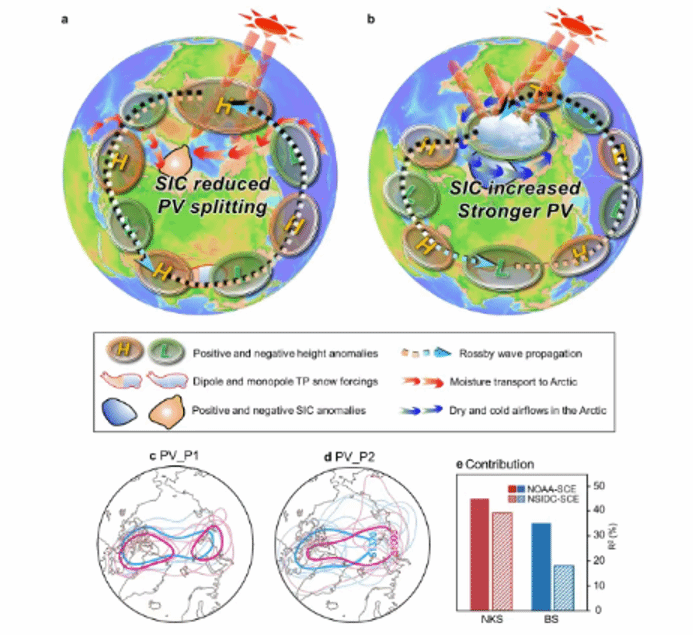Abstract
Documenting changes in the Arctic sea-ice variability are essential for understanding the spring sea-ice predictability barrier. While Tibetan Plateau snow cover (TPSC) has been linked to Arctic sea-ice variability, the spatiotemporal stability of this relationship remains unclear. In this study, combing satellite observations and snow experiments, we identified a shift in connections between TPSC and Barents-Kara Seas sea-ice around 1990. Before 1990, a positive dipole TPSC pattern (eastern enhanced/western reduced snow cover) induces Arctic anticyclonic anomalies through a circumglobal wave train. These anomalies facilitate polar vortex splitting, enhancing moisture transport and solar radiation over the northern Kara Sea, which accelerates sea-ice reduction. Conversely, post-1990, a positive monopole TPSC pattern (positive snow anomalies on the entire Tibetan Plateau) strengthens the polar vortex, suppressing Barents Sea (BS) moisture and solar radiation, thereby promoting sea-ice growth. This regime shifts underscore TPSC's capacity to modulate Arctic sea-ice dynamics through polar vortex system.

Zhang, C., Duan, A., Jia, X., Liu, S. (2025). Connecting Tibetan Plateau Snow Change With Arctic Sea‐Ice. Geophysical Research Letters. 52, e2025GL116351
https://doi.org/10.1029/2025GL116351
Peng, Y., Duan, A., Shen, Z., et al. (2025). Emergent constraint on CMIP6 model projections of winter ice‐free periods in the Barents–Kara Sea. Geophysical Research Letters. 52, e2025GL117660
https://doi.org/10.1029/2025GL117660